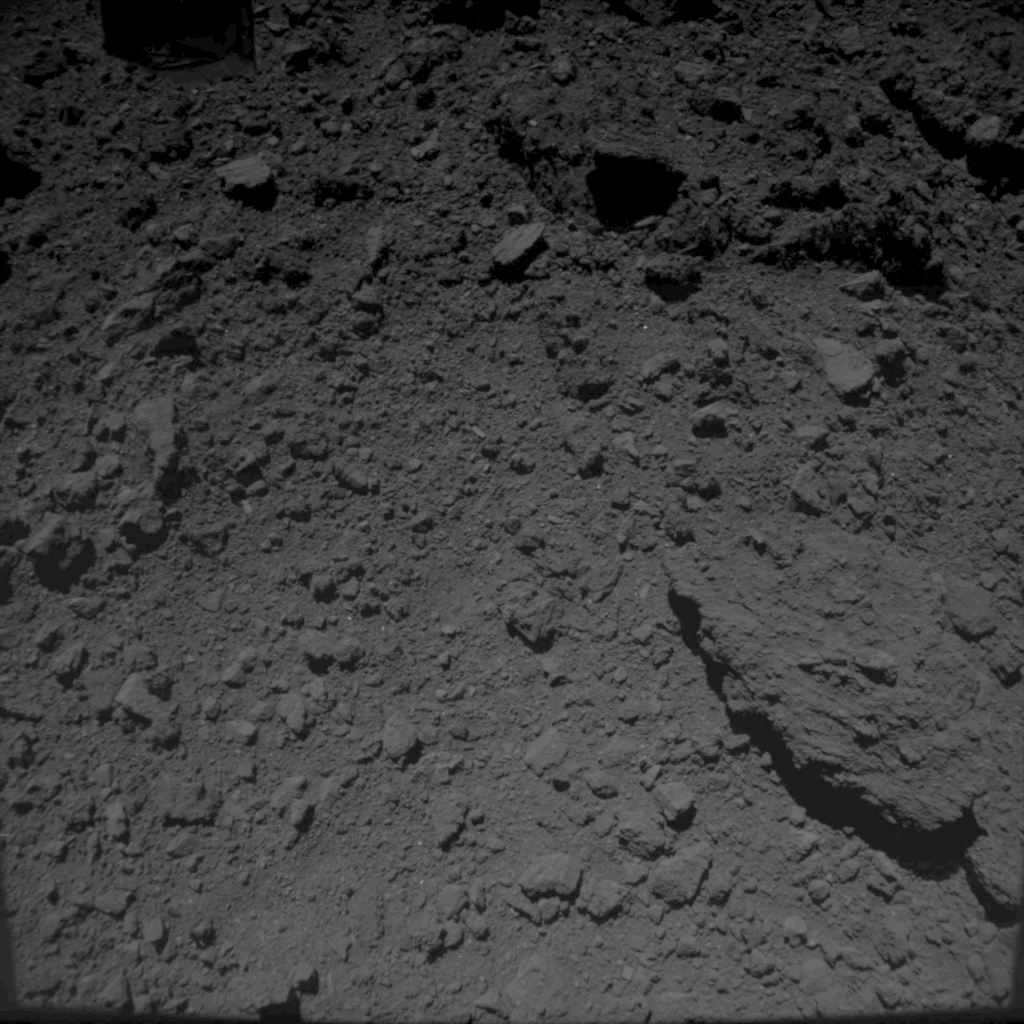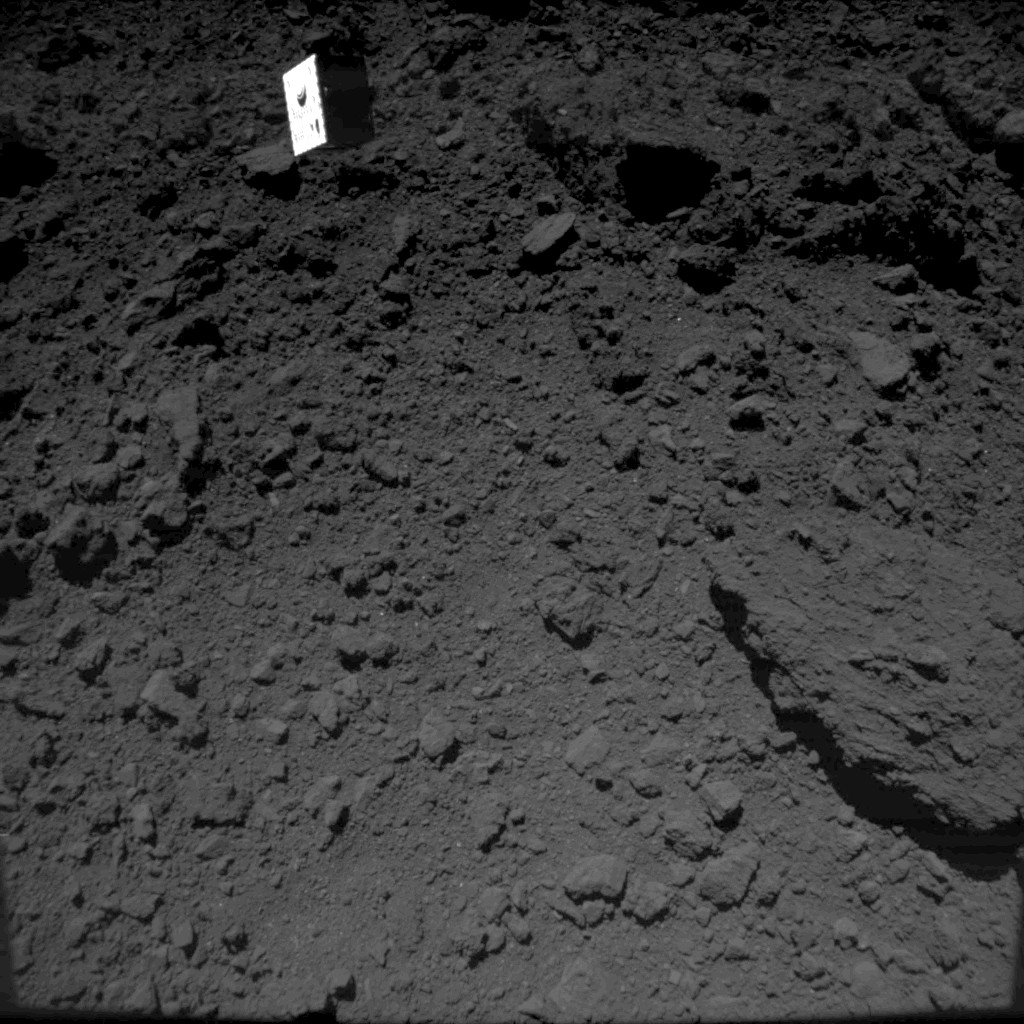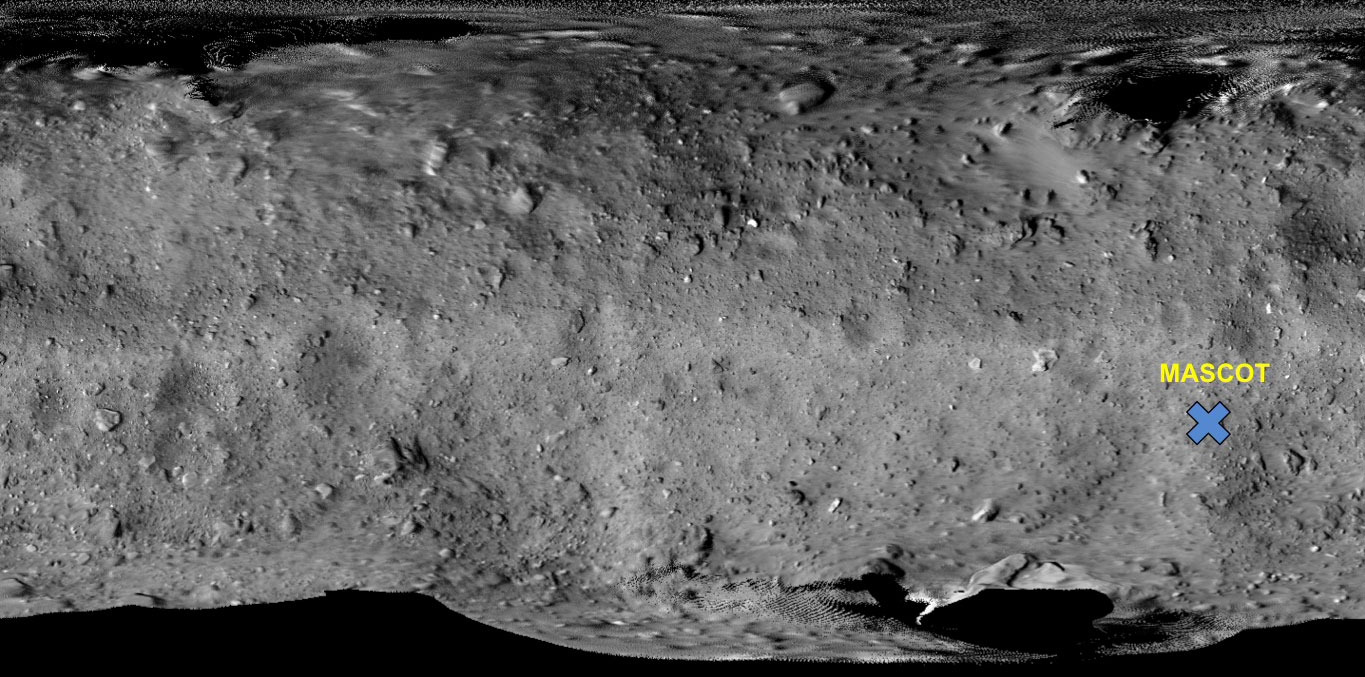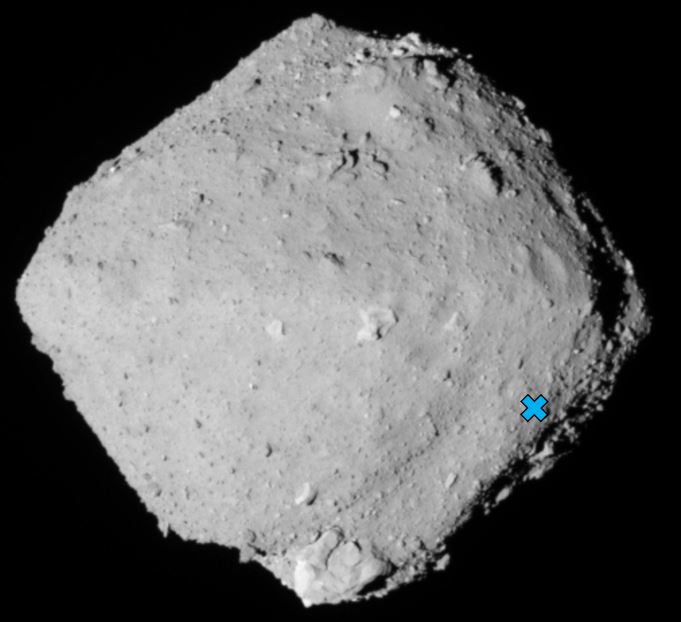The small asteroid lander, MASCOT, that was developed in Germany and France, was successfully separated from the Hayabusa2 spacecraft on October 3 and delivered safely to the surface of Ryugu. After landing, MASCOT acquired scientific data on the asteroid surface, which was transmitted to the MASCOT team via the spacecraft. Scientific analysis of this data is expected to be performed by the MASCOT team from now onwards.
From the Hayabusa2 spacecraft, we attempted to capture the separated MASCOT using the three optical navigation cameras (ONC-T, ONC-W1, ONC-W2). When the image data was received from the spacecraft, we could confirm that MASCOT appears in images photographed with the ONC-W1 and ONC-W2.
Figure 1 shows MASCOT photographed by the ONC-W2 immediately after separation. MASCOT was captured on three consecutively shot images, making a short animated movie. The image capture time is between 10:57:54 JST – 10:58:14 JST on October 3. Since separation time itself was at 10:57:20 JST, these images were captured immediately after separation. The ONC-W2 is a camera attached to the side of the spacecraft and is shooting diagonally downward from Hayabusa2. This gives an image showing MASCOT descending with the surface of Ryugu in the background. MASCOT is especially clear in the third image.
-

[Open in another window (enlargement)]



[Open in another window (Image 1)] [Image 2] [Image 3] Figure 1: Three consecutive images taken on October 3, 2018 between 10:57:54 – 10:58:14 JST by the Optical Navigation Camera – Wide angle (ONC-W2). MASCOT appears in the upper edge of the image.
Image 1 : 10:57:54 JST
Image 2 : 10:58:04 JST
Image 3 : 10:58:14 JST
(Image credit ※1: JAXA, University of Tokyo, Kochi University, Rikkyo University, Nagoya University, Chiba Institute of Technology, Meiji University, University of Aizu, AIST.)
Figure 2 shows the image of MASCOT photographed with the ONC-W1. This picture was captured at 10:59:40 JST on October 3, 2 minutes and 20 seconds after the lander separated from the spacecraft. The ONC-W1 is attached to the bottom of the spacecraft, so the view is directly below Hayabusa2. At this point, the spacecraft is rising slowly. MASCOT is the white dot and has not yet landed on the asteroid surface, so the lander casts a shadow that creates a black dot on the surface of Ryugu. Beside it, is the shadow of Hayabusa2.
-

[Open in another window]
Figure 2: Image taken on October 3, 2018 at 10:59:40 JST by the Optical Navigation Camera – Wide angle (ONC-W1). Enlarging the image reveals white and black dots that correspond to MASCOT and its shadow, respectively, during the descent. The large shadow in the lower right of the MASCOT image is the shadow of the Hayabusa2 spacecraft.
(Image credit ※1: JAXA, University of Tokyo, Kochi University, Rikkyo University, Nagoya University, Chiba Institute of Technology, Meiji University, University of Aizu, AIST.)
If you enlarge the white dot of MASCOT in Figure 2, it appears as if there is a white round dot inside a black square. It seems that it is the base (bottom) of MASCOT that is visible. Figure 3 is a picture of the base of MASCOT. Comparing with the enlarged picture of MASCOT in Figure 2, the shining white dot is thought to be the antenna.
-

[Open in another window] Figure 3: Underside base surface of MASCOT. The round white circle is the antenna. (Image credit: DLR).
The altitude of MASCOT shown in Figure 2 is estimated to be about 35 m (※2). After this image was captured, MASCOT descended to the surface of Ryugu and operated for about 17 hours, sending the collected data back to the spacecraft. The location where MASCOT landed is also estimated and shown in Figure 4.
-

[Open in another window]

[Open in another window]
Figure 4: Estimated MASCOT landing point. (Top) Location on the map. (Bottom) The point is indicated on the Ryugu image observed from the home position (article at July 11).
(Image credit ※1: JAXA, University of Tokyo, Kochi University, Rikkyo University, Nagoya University, Chiba Institute of Technology, Meiji University, University of Aizu, AIST.)
※1: Please use the displayed credit when reproducing these images. In the case where an abbreviated form is necessary, please write "JAXA, University of Tokyo & collaborators".
※2: The altitude of MASCOT during descent was estimated by Rikkyo University members (including students) on the ONC team.
Hayabusa2 project
2018.10.05

